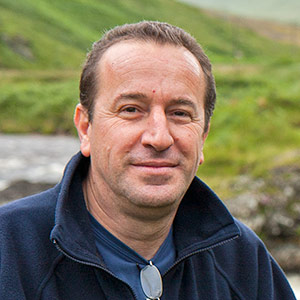The Alto Douro is one of the regions with the strongest personality, essentially defined by identifying the landscape with a river, the Douro, and the dominance of a product, the Port Wine. The Demarcated Area for the Production of Port wine begins in Mesão Frio and extends to Barca de Alva, on the border with Spain.
The Alto Douro presents a typical humanized landscape in which man knew how to obtain the best value for the land in response to the demand of British merchants for a unique and high-quality fortified wine, the Port Wine.
In its Portuguese section, the Douro runs between tight banks, except in some stretches with gentle slopes, such as the region shown in this photograph, which is particularly suitable for cultivating vines. In this embedded valley, the climate has Mediterranean characteristics, with dryness and high summer temperatures accentuated by the shale soil.
At the end of the 18th century, the demolition of a seven-meter high waterfall located a few km upstream from where this photograph was taken, the Cachão Da Valeira, that prevented the boats from moving upstream made the river navigable to the Spanish border. Despite this work, navigation on this site continued to be risky. It was precisely in Cachao da Valeira that Joseph James Forrester (1809-1861), the first Baron of Forrester, a cultured Englishman, owner and producer of wine and an experienced cartographer, to whom we owe a detailed topographical survey of the vineyard territory, died by drowning in 1861. The construction of five dams in the Douro in the 20th century (1972-1985) completely and drastically changed the physiognomy of the river, which is now calm and peaceful and completely navigable with safety throughout the entire Portuguese section.
The introduction of the railway at the end of the 19th century, running along the river to Spain, was an exceptional factor in the economic promotion of the region.
The image I present here, captured on a beautiful late afternoon in September of last year, from Santa Marinha's viewpoint, Alijo, captures the essence of the Porto Wine landscape, dominated by terraces with vines. In addition to the vineyard, there are scattered olive trees and patches of shrubs and bushes in areas that are very steep and full of rocks where agriculture is impossible. Further upstream in the river, almond trees are also crucial in landscape architecture. Finally, we see the railway line and the Tua station on the left side, close to the river. The villages are small and scattered across the territory.
Three images taken with a Canon 77D were combined into this panorama.
Benefits of VIP membership:
• Download all new issues of Landscape Photography Magazine
• Download all back issues of Landscape Photography Magazine
• Download all new issues of Wild Planet Photo Magazine
• Download all back issues of Wild Planet Photo Magazine
• Download premium eBooks worth £19.45.
• Create your Personal Portfolio Page – click here to see sample
• Your pictures stay attached to your Personal Portfolio Page forever
• Your published pictures are shared with over 300,000 members and followers
• Your shared pictures are tagged on Instagram
• Submission Priority – your submission goes to the front of the queue
• Fast Support – we aim to reply within 12 hours
 Create your Personal Portfolio Page and let us share your published pictures with over 300,000 members and followers.
Create your Personal Portfolio Page and let us share your published pictures with over 300,000 members and followers.
Dimitri Vasileiou • Editor


